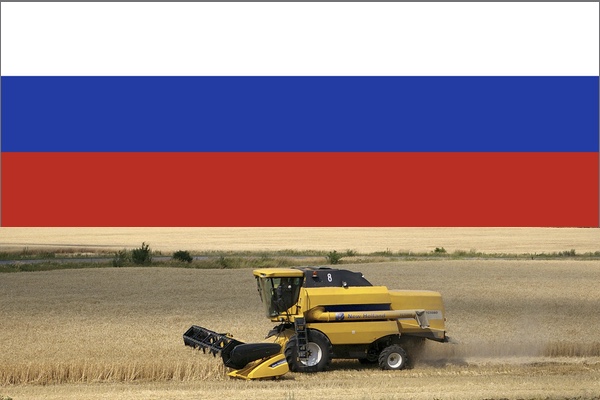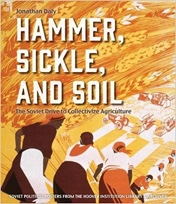While We Weren’t Looking Russia Once Again Became the World’s Biggest Exporter of Wheat

Russian President Vladimir Putin was surely wrong to label the fall of the Soviet Union “the greatest geopolitical catastrophe” of the 20th century. It is far more accurate to describe the Soviet Union’s rise as Russia’s greatest domestic political catastrophe.
 Yet
Russia’s economic condition is the far greater life-and-death issue
– as history shows us. After the Bolsheviks came to power in 1917,
the country went from Europe’s breadbasket to the world’s biggest
importer of wheat in a matter of years. Today, it raises the question
– can Russia rediscover its pre-revolutionary economic status in
the way it has done so in the agricultural sector?
Yet
Russia’s economic condition is the far greater life-and-death issue
– as history shows us. After the Bolsheviks came to power in 1917,
the country went from Europe’s breadbasket to the world’s biggest
importer of wheat in a matter of years. Today, it raises the question
– can Russia rediscover its pre-revolutionary economic status in
the way it has done so in the agricultural sector?
Analyzing the Soviet experiment offers important lessons for Russia now and into the future. Consider that when the Bolsheviks seized control, the country was already suffering economic distress. Their new policies of nationalization of commerce and industry, extreme economic regulation, and grain confiscation only served to exacerbate the country’s declining economic conditions. Only when market forces were unleashed beginning in 1921 did the Soviet Union’s economic output gradually return to prewar levels.
Yet permitting Soviet citizens to engage freely in commerce seemed to contradict the regime’s guiding Marxist philosophy. Nor could the government convince farmers to part with their produce without more finished goods to exchange for it. Industrialization was therefore the only reasonable response to the “grain-procurement crisis.” Building industry required huge investments, but the only potential source of funds was the peasantry—a vicious circle.
Stalin envisioned squeezing the Soviet peasantry. Collectivization was falsely presented as a voluntary movement supposedly gaining strength in late 1929. In December, Stalin announced a policy of "universal collectivization." Peasants were encouraged to pool their resources and freely contribute large surpluses to the state.
Not surprisingly, most balked. So Stalin and the political police worked out a clever plan. Collectivization would be accompanied by the "liquidation of kulaks as a class." The "kulaks" were viewed as well-to-do and often greedy peasants. After the spontaneous social leveling in the countryside in 1917, however, there were few actual "kulaks" left.
No matter: the regime proceeded to target for repression and label as "kulaks" any peasants who resisted collectivization. Though joining a collective farm was supposed to be voluntary, harsh and often violent coercion was used to convince peasants to join. Resistance in the countryside reached such massive proportions that in March 1930, Stalin felt obliged to slow down the process with his famous "Dizzy with Success” speech published in the newspaper Pravda.
Collectivization continued, but with bigger propaganda campaigns and more police, party, and government officials involved. In 1930-1931, nearly 2 million people were hauled away in boxcars and dumped in remote localities as "kulaks.” Repression peaked in August 1932 with a law making it a capital offense to harvest even small quantities of grain for personal use. Thousands were shot and killed for breaking this law.
Because farmers were poorly paid, most refused to exert themselves adequately in the fields. The country’s harvests declined sharply in 1931 and 1932, resulting in a largely man-made famine. Those who survived were taught a bitter lesson—never again defy the government. And so, the entire peasantry joined and remained in the collective farms, serving the state, and handing over their surplus as required.
Collective farmers worked hard only on their individual plots of land. This concession was given by Stalin to help Soviet agriculture to pull out of its tailspin. Until the collapse of the Soviet Union in 1991, the tiny individual sector (roughly 2 percent of the country’s arable land) yielded 20 or 30 percent of the vegetables, milk products, meat, and potatoes produced in the country. In this sector, the collective farmers lavished care, which kept the stunted agricultural economy afloat and the Soviet standard of living less disastrous than it would otherwise have been.
When the Soviet Union collapsed, the collective farms did so as well. Yet the agricultural economy did not turn around immediately. Most importantly, until a decade ago it was still not legal to buy and sell farmland freely.
Finally, in 2016 Russia returned to its pre-revolutionary heritage as a breadbasket of the world due to a fall in the value of the ruble, close proximity to major grain importers (like Egypt and Turkey), relatively low production costs, big investments in farming technology, and a run of good weather. The same year, on the very eve of the revolutionary centennial, Russia became the world’s biggest exporter of wheat.
Yet its broader economic position remains weak. In 1913, Russia had the third or fourth biggest economy in the world, compared to the 12th biggest today. The big question facing Russia—by far the world’s biggest country, with extraordinary natural resources, and a highly educated population—is whether it can move closer to that pre-revolutionary economic status as it has in agriculture.